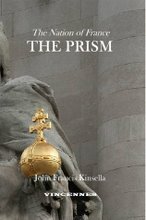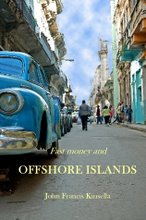
I wrote this article last summer for Charles Hugh Smith in San Francisco for his excellent blog Oftwominds. So why am I adding it here? Because following my last visit to the Basque Country I see that things never change, so it’s worth a reminder!
July 17, Hendaye, Basque Country. As I sit here the outside temperature hovers between 95 and 105°F, probably the highest ever recorded in the Basque Country, a region straddling the Spanish-French border, known for its mild and often wet, temperate, North Atlantic climate. To the Spanish side, the Basque Country is an autonomous region called Euskual Herria, politically part of the Spanish Republic, to the French side it has no political status - to the great chagrin of the Basques - other than through its long history and traditions.
I normally spend two or three months a year here, relaxing by the sea, walking in the nearby green hills and mountains, eating the local specialities: tapas, Jamon Iberico and drinking Rioja wine. Recently, however, I cannot but help noticing that things are changing, and changing fast, faster than I could have ever before imagined.
In the background a continuous TV news channel reports alarming news from the Lebanon, which, perhaps strangely, does not seem to concern the tens of thousands of holiday makers sunning themselves on the long sandy beaches of Hendaye, that is apart from the fact that here the price of gasoline has risen to almost 8 dollars a gallon at the pump, a price that would cause a revolution in California.
Hendaye is a town with a population of approximately 15,000 permanent residents during the most part of the year, but which rises to about 80,000 at the peak of the summer. Locally, property prices have now reached astronomical heights, rivalling those of Paris, 500 miles to the north, and Madrid, 300 miles to the south. These prices reflect the general property bubble in a good number of the so called developed countries.
Why such property prices in Hendaye, this small unimportant town in the south west extremity of France? Ever since the disappearance of borders in the European Union, Hendaye has become an attractive residential area for a certain number of Spaniards from the prosperous neighbouring towns in the area between Irun and San Sebastian, said to be the smartest Spanish seaside resort, only a little over ten miles from Hendaye. They have mostly acquired second homes, but many also first homes. This is mainly due to the lack of availability of apartments on the more densely populated Spanish side of the border, plus the facility of the San Sebastian rapid transit system, the last station of its northern branch being situated on the Hendaye side of the border, allowing them to commute to their work places in and around San Sebastian from their new homes on the French side of the border.
In the space of ten years or so the Spanish population in Hendaye has risen to reach almost one third of the total population, a not unwelcome change to a previously pleasant but economically fading town. This situation has led to galloping property speculation and the development of infrastructure projects to meet the needs of the burgeoning population. This infrastructure need includes an ecologically doubtful, large scale, urban garbage incinerator just a few miles to the south of Hendaye and the Spanish city of Irun.
The municipality of Hendaye is part of what is called the ‘Consortio’, that is to say a cross border administrative structure made up of three adjacent municipalities, the other two being the cities of Irun and Fuenterrabia with populations of 100,000 and 10,000 respectively. Fuentarabia is an old and picturesque coastal town facing the Hendaye boat marina, it lies on the southern side of the Bidasoa River, with its magnificent Cathedral and Alcazar built to defend Spain against France in the 16th century. The general atmosphere has an odour of speculation, ranging from property to for example the extension of the small San Sebastian Airport that lies in the magnificent Xingudy Bay, which is surrounded by the foothills of the Pyrenees. For decades the airport, the single runway of which juts into the bay under the shadow of the Jaizkibel, and just a couple of hundred yards or so short of Ile des Oiseaux, a transit point for migratory birds, has been the point of arrival and departure of just a dozen daily commercial flights, the majority of which are relatively silent turboprops. Ambitious politicos and businessmen envisage the extension runway more than half a mile into the bay to facilitate the arrival of big jets, transforming this landscape of extraordinary beauty into another polluted industrial-transport zone.
Even the small park with its hundred year old plane trees I can see across the road from me, bequeathed in trust to the town by its long defunct owners, is in the course of being transformed into a superfluous play park, with more than its fair share of concrete. On a much larger scale the one hundred and fifty year old Paris-Madrid railroad line that runs through a deep cutting in the centre of the town is in the course of being covered by a monumental concrete platform, three or four hundred yards long by almost one hundred wide, a construction site more in line with an airport terminal building than the foundations for a 450 apartments condo, complete with shops and a parking facility, conceived on a totally speculative basis. This will increase the total number of residential units in Hendaye by not far off ten percent. And this is just one of the projects!
Our elected representatives tell us all these changes are needed for growth, for jobs, to encourage development. I ask myself what will they do for an encore when the current projects are completed in a year or two. Will the cycle start again? Then again and again? Where will it led us? Do we need these changes, changes that indirectly influence the course of events in other parts of the world, the struggle for resources, oil, minerals, water, space, changes in the climate, and a future when we will see more and more summers with temperatures in the order of 100°F.
copyright © 2006 John Francis Kinsella. All rights reserved in all media.






